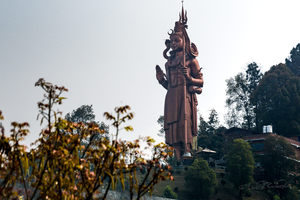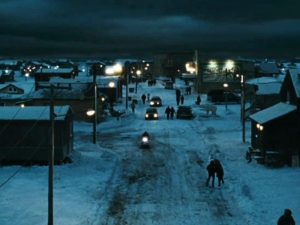
Completed in 2011 after seven years of construction, this 144-foot tall statue presenting the hand gesture (or mudra) offering blessings of peace stands approximately 12 miles east of Kathmandu. Nearly as tall as the Statue of Liberty (151 feet), Shiva is comprised of copper, zinc, concrete, and steel. It’s also the second tallest Hindu deity in the world.
Accompanied by his telltale trident representing Shiva’s three functions as creator, preserver, and destroyer, as well as a damaru (drum), which he uses in his dance, Shiva is also garlanded by the serpent Vasuki, who represents power and fearlessness.
Next to Shiva is Nandi, the bull that represents one of Shiva’s alter egos Pashupati, or “Lord of Cattle.” Surrounding the statue in the temple complex are 12 Shiva lingams, which may or may not be symbolic phalluses depending on the source, but represent Shiva’s role as a creator and god of fertility.
The name Kailashnath means “Master of Mount Kailash,” while Mahadev means “great god.” Mount Kailash, Shiva’s traditional home, is a 21,800-foot tall mountain in the Tibet Autonomous Region of China near the northwest corner of Nepal. It sits near the headwaters of the Indus, Brahmaputra, and Karnali rivers.
To help visitors and votaries reach Shiva’s mount, a new 738-foot pedestrian suspension bridge was recently constructed over the busy Araniko Highway. The views of the Himalayas and Kathmandu Valley from the bridge are alone worth the hike up to the statue.



